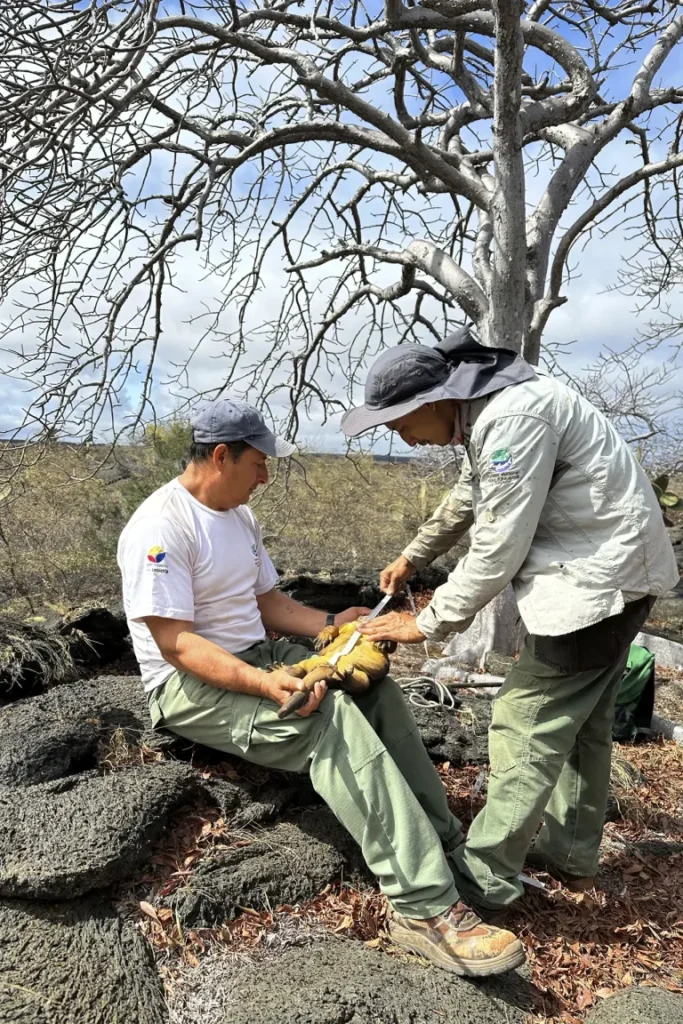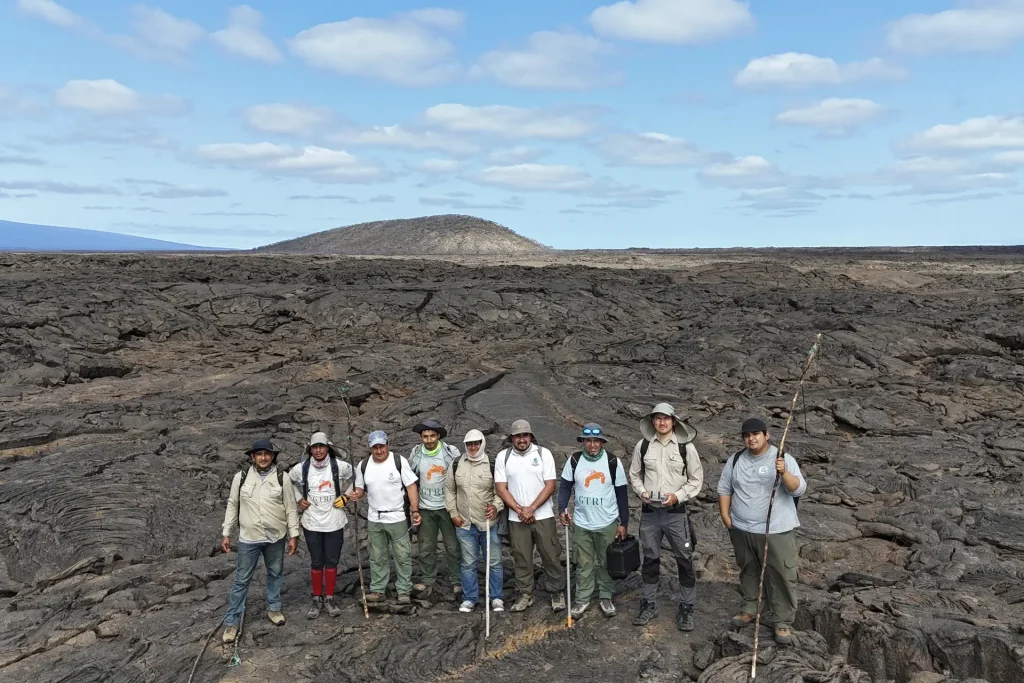A team of Galapagos Conservancy specialists and park rangers from the Galapagos National Park Directorate led by Dr. Jorge Carrion, of the Galapagos Conservancy embarked recently on a crucial mission to safeguard the last wild population of yellow land Iguanas (Conolophus Subcristatus) of Galapagos. Cartago Bay is a rugged, remote and seldom visited area on Isabela Island‘s southeast shore. They spent eight days searching through hot lava fields, small hills and dense vegetation for the elusive Iguanas. They captured, measured and marked many of them, while collecting essential biological samples. This is the last wild population on Isabela Island, and it has not been monitored for 20 years. The team’s findings suggest that this isolated population is likely to recover.
Population Monitoring
The team caught 288 yellow land Iguanas during the expedition: 117 males and 171 females. The strong and feisty animals can be difficult to capture, but even more so to handle. The team managed to measure every iguana they captured, allowing them to determine the size of the population, its distribution, and the changes in conservation status.
The 288 individuals were tagged in two different ways: 50% of them had never been tagged, and the other 50% had subcutaneous devices fitted. Interestingly, some of the iguanas captured in 2024 had been part of a captive-breeding program that was launched in the 1970s. These individuals, which were introduced to Cartago Bay as juveniles several decades ago, would be around 50-60 years of age. This suggests that some individuals have not only survived, but thrived.
Dr. Jorge Carrion stated that the monitoring effort had produced an estimated population of 600-700 in Cartago Bay. He said that they also saw the positive effect of removing feral goats from the habitat of the iguanas. This allowed the habitat to recover, and more food was available for the iguanas.
Biological Sample Collection
The collection of biological specimens was another essential task on the expedition. The iguanas’ blood and feces were collected and will be analyzed soon to gain insight into the genetic health, diet and presence of diseases. This information will help develop effective protection strategies to protect this iconic species, both in Cartago Bay as well as elsewhere on the archipelago.
Recording other species of interest
The team also recorded other species of note in the area. Invasive species pose a serious threat to yellow-land iguanas. No invasive plant species have been recorded on this expedition. However, feral cats are common. Cats can eat iguanas that are still in their juvenile stage and this could potentially affect iguana reproductive success.
Expedition Success
The Cartago Bay expedition marked an important milestone in the efforts to conserve the yellow iguana. The expedition activities, from population monitoring to collecting biological samples, provide valuable information that will be used in developing a conservation strategy. The discovery of previously-tagged individuals is a clear indication of the success and ongoing efforts towards the reintroduction of young iguanas in the wild.
Scientists, technicians and park rangers observed an ecosystem that was steadily recovering after the removal of the feral goats. This has led to an increase in the food resources available for the iguanas. Dr. Carrion summarized the situation best, “We are now seeing the results of years of hard work to restore land Iguanas on this important area of Galapagos.”
This is only the beginning. Every expedition makes progress in protecting iconic species, which are important not only to the archipelago but to the individual species as well. Galapagos Conservancy reiterates its commitment to advance science and conservation not only for yellow land iguanas but also for all species that make Galapagos an international treasure.




